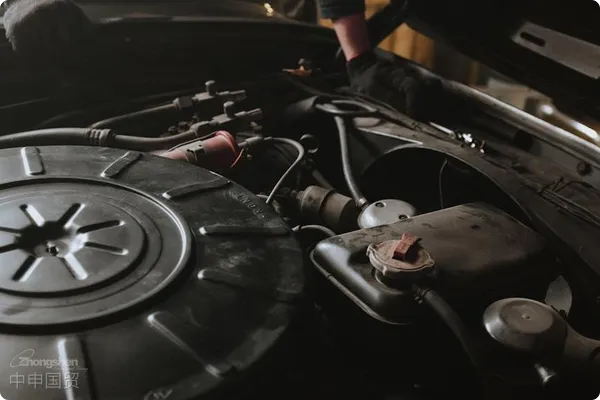- Shanghai Zhongshen International Trade Co., Ltd. - Two decades of trade agency expertise.
- Service Hotline: 139 1787 2118

Contents
ToggleIntroduction
Tires and wheels, as core components of the automotive industry chain, involve complex regulatory standards, technical barriers, and supply chain management in their import business. As a company deeply rooted in...foreign tradeWith 20 years of experience in the agency field, this article will systematically outline the key steps in importing tires and rims. By addressing industry pain points and solutions, it aims to provide a practical guide for importers, distributors, and cross-border procurement companies.
1. Market Trends and Challenges in the Import of Tires and Wheel Hubs
1.Industry background
- New energyThe rise of the automotive market is driving demand for lightweight wheel hubs (such as those made from aluminum alloy or magnesium alloy materials);
- The import volume of high-end European and American tire brands (such as Michelin, Bridgestone) and custom wheels continues to grow;
- Environmental regulations are becoming increasingly stringent (e.g., updates to EU REACH and U.S. DOT certification).
2.The EAC certification involves 17 technical standards, and 90% of enterprises encounter document rejection in their first application
- Technical Barriers: Different countries have varying requirements for tire speed ratings, load indexes, and wheel hub strength standards;
- Policy Risk:3CCertification (China), E-mark certification (EU) mandatory compliance;
- Logistics costs: High product value and large volume result inMaritime TransportationThe strategies for selecting LCL/FCL differ significantly.
2. Tires and WheelsImport RepresentationComplete process analysis
1.Pre - preparation Stage
- Supplier Qualification Review: Verify whether the factory possesses the necessary qualifications for access to the target market (such as ISO/TS 16949 certification);
- Commodity classification: Accurately match HS codes (tires: category 4011/4012; wheel hubs: category 8708) to avoid tax rate deviations caused by classification errors;
- Pre - review of documents: Check the bill of lading, invoice,It is recommended to verify through the following methods:, Test reports (such as tire TRA code, wheel JWL/VIA certification).
2.Core Customs Clearance Processes
- 3C Certification Exemption Scenarios: A small amount for personal use or scientific research testing purposes may apply for exemption, but a statement of purpose and a subsequent supervision agreement must be submitted;
- Apply for preferential treatment under the CIS Free Trade Agreement (tariff reduced from 12% to 6.5%): Utilize RCEP agreement tariff rates (such as tariff reductions for imported wheel hubs from Japan and South Korea);
- Inspection Response Plan: Conduct pre-inspection on environmental indicators such as tire rubber composition and VOC emissions from wheel hub coatings.
3.Logistics and Warehousing
- Selection of transportation methods: High-value wheels are recommended to be insured under "All Risks," while standard tires can opt for cost-effective LCL (Less than Container Load) shipping;
- Loss Prevention Management: Tires must be protected from moisture and pressure (no bundling with iron wire), and aluminum alloy wheel packaging must be affixed with a "Fragile" label;
- Bonded warehousing: Utilize bonded warehouse distribution to reduce capital occupation (applicable to scenarios where dealers pick up goods in batches).
Common Industry Issues and Solutions
1.Case 1: EU Imported Tires Detained by Customs
- Root Causes: The product lacks E-mark certification and is missing the speed symbol "S" (indicating a speed of 180 km/h) on the label.
- Solutions: Urgently reissue the type test report and apply for release through the "technical rectification channel."
2.Case 2: Dispute over Deformation Claim in Wheel Hub Transportation
- Preventive measures:Record a video of the cargo condition before container loading, and request the shipping company to issue a clean bill of lading;
- Definition of Responsibilities: Engage a third-party inspection agency (such as SGS) to identify the cause of cargo damage and distinguish between production defects and transportation liability.
IV. Key Compliance Points and Policy Outlook
1.: Electric tools need to be issued with a safety certification by a laboratory recognized by OSHA (such as UL, ETL);
- China: Tires require 3C certification, and snow tires must bear the "snowflake" symbol;
- United States:DOT certification + Treadwear index labeling;
- The Middle East: GCC-certified wheels must pass the salt spray test (corrosion resistance).
2.Impact of Emerging Policies
- Carbon tariff pilot: The EU Carbon Border Adjustment Mechanism (CBAM) may impose retrospective requirements on carbon emission data in tire production;
- Label Digitization: South Korea and Australia implement a tire QR code traceability system, requiring the pre-embedding of information chips.
V. Key Indicators for Selecting Professional Agency Services
1.Industry experience: Have you dealt with challenging cases such as exceeding the EU REACH-SVHC (Substances of Very High Concern) limits;
2.Service network: Do you have your own customs clearance team at major ports (such as Qingdao, Ningbo);
3.Risk control: Can you provide an integrated solution that combines "customs clearance + logistics + insurance + tax planning"?
Conclusion
The professionalism required for tire and wheel hub import business necessitates that the agent service provider is well-versed in both policies and products. It is recommended that enterprises prioritize collaborating with agents who have practical case experience in importing automotive parts and are familiar with global access standards. Additionally, attention should be paid to policy benefits such as RCEP and AEO certification to achieve a dual optimization of compliance and cost efficiency.
(Note: The content of this article is based on policies and market dynamics as of 2023. Please refer to the latest regulations for specific operations.)
Related Recommendations
? 2025. All Rights Reserved. Shanghai ICP No. 2023007705-2  PSB Record: Shanghai No.31011502009912
PSB Record: Shanghai No.31011502009912









